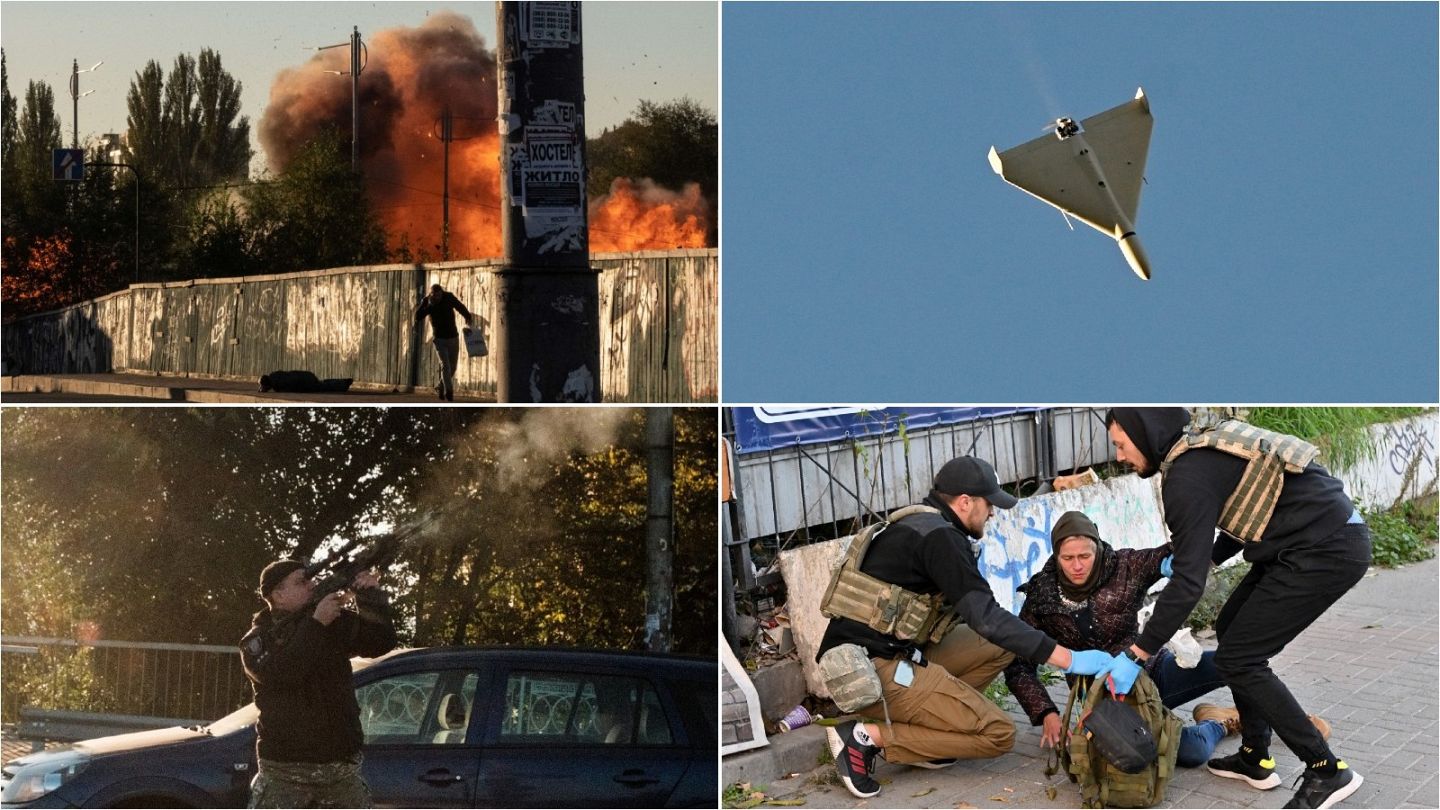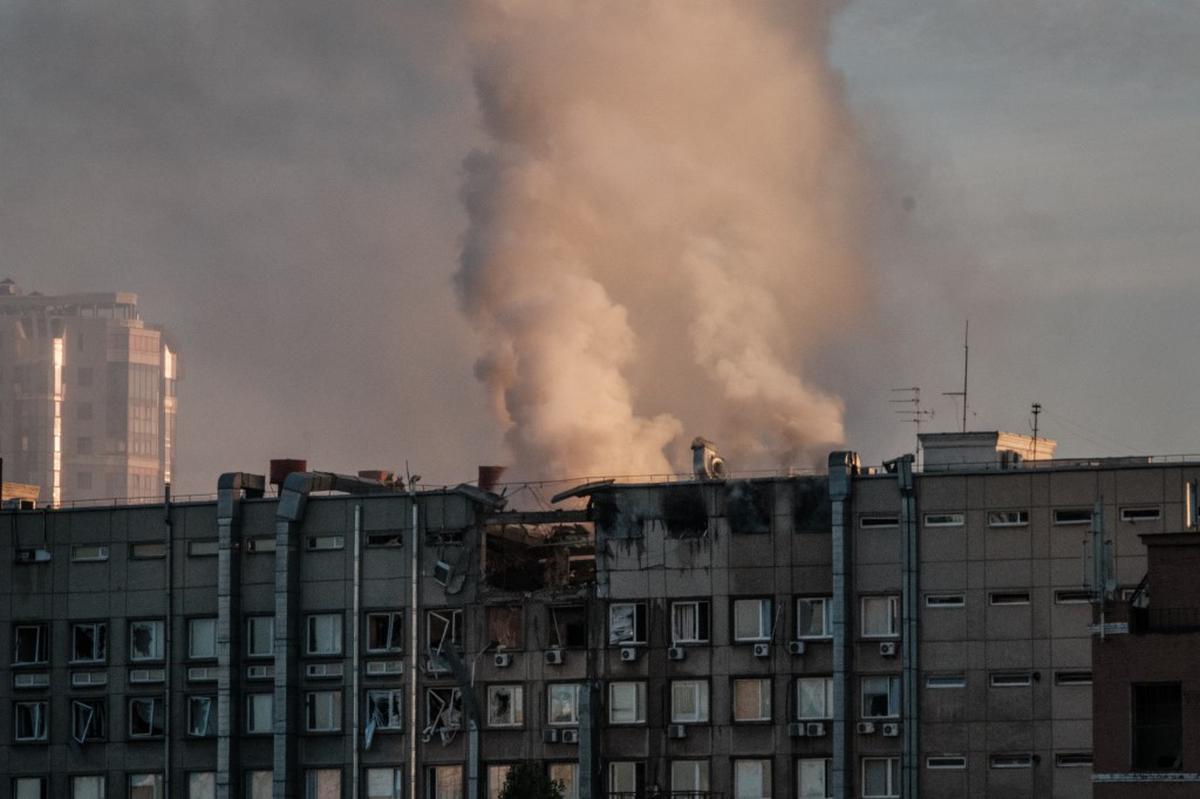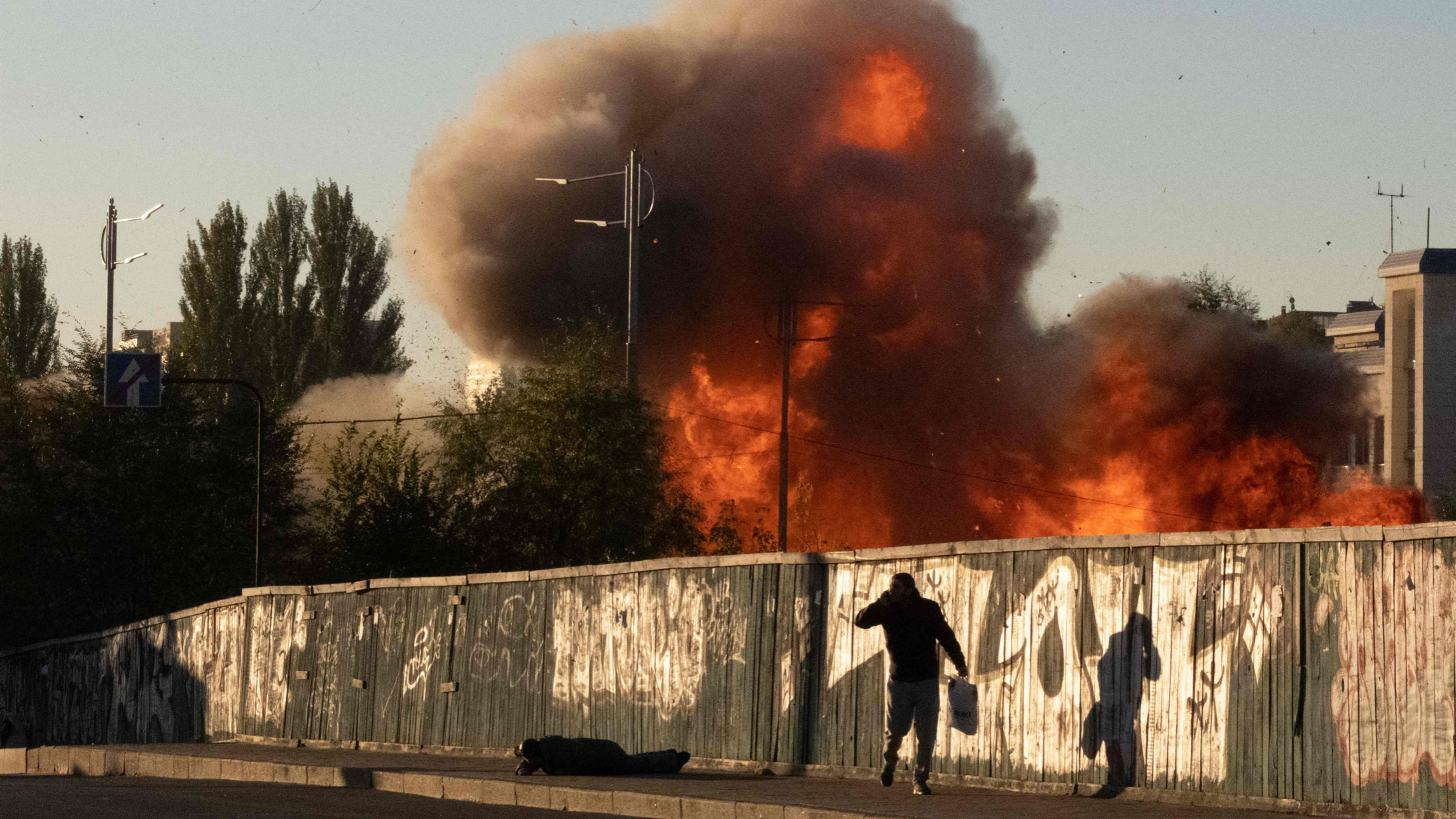Ukraine was targeted by Russia’s kamikaze drone attack as a message to the West

Ukraine was targeted by Russia’s kamikaze drone attack as a message to the West
Vladimir Putin wanted to show what he would be prepared to do if he felt it was necessary.
After many weeks of field failures, Russia seems to have resumed its assaults on the major cities of Ukraine, mostly through missile and drone strikes. Iran, a Kremlin ally, has made denials to the contrary, but there is mounting evidence that Russia is making extensive use of Iranian drones. The Shahed-136 “kamikaze” drone, with a range of more than 2,000km, is one example of this. Russia is now able to attack populated areas that are well behind the lines of contact.
43 of these drones struck Kyiv on October 17 alone, killing four people and damaging crucial public infrastructure. Dominika Kunertova, an expert on drones at the Center for Security Studies in Zurich, examines the various classes of drones and concludes that while they can have a significant psychological impact on the morale of the Ukrainian people, they are unlikely to directly affect the course of the war.
In recent times, Russia’s strategy has been to attack Ukraine’s water and electrical infrastructure with drones and missiles. Ukraine is preparing for a winter of power shortages and severe suffering after eight days of strikes that caused almost 30% of the country’s power plants to be damaged. According to Benjamin Jensen of Marine Corps University in Virginia, enormous and persistent cyberattacks aimed at Ukraine’s computer systems have become a regular component of Russia’s geopolitical playbook, which has traditionally included strikes on infrastructure.
 Additionally, according to Jensen, Putin is pursuing this policy with an eye toward the West. Aside from sending a clear message about what he is willing to do if he sees fit, the assault on the Nord Stream gas pipelines, for which Russia is primarily responsible, also serves to demonstrate his willingness.
Additionally, according to Jensen, Putin is pursuing this policy with an eye toward the West. Aside from sending a clear message about what he is willing to do if he sees fit, the assault on the Nord Stream gas pipelines, for which Russia is primarily responsible, also serves to demonstrate his willingness.
In the meantime, Ukraine’s president, Volodymyr Zelensky, has reiterated his requests to western nations to provide air defense systems to shield his nation from these assaults. The University of Colorado Boulder’s Iain Boyd says that if Ukraine were to acquire enough of these defense systems, the Russian missile arsenal would suffer significantly. Moscow won’t want to rely solely on its ground forces to complete the mission, as we have already seen.
The “Rogue” Russia

Many people noted how swiftly Russian flags began to emerge on the streets of Ouagadougou, the nation’s capital, following the recent coup d’etat in Burkina Faso, a country in West Africa. Yevgeny Prigozhin, the head of the private mercenary Wagner Group and a close friend of Vladimir Putin, congratulated the coup leaders and said: “Colonialists ruled Burkina Faso, robbing the people and playing their vile games, training, supporting gangs of bandits, and causing much hardship for the locals.“
Having worked in Africa for some time, the Wagner Group assists Russia in dislodging the influence of the former colonial powers. In the meantime, it continues to strengthen its ties with Iran while supporting the Assad dictatorship in Syria. Russian interference in the separatist republics of Transnistria in Moldova, Abkhazia, and South Ossetia in Georgia has stoked discontent on the eastern periphery of Europe.
The Kremlin’s nuclear saber-rattling over Putin’s invasion of Ukraine, in addition to this, according to University of Birmingham professor of international politics David Dunn, should be sufficient evidence that Putin’s overarching goal is to reshape the international security system in Russia’s favor. According to Dunn, how this battle plays out will have a profound impact outside of Ukraine’s borders.
As seen by the amount of military assistance the US is providing to Ukraine, Monica Duffy Toft believes Washington is well aware of this. It appears that Toft, a professor of international affairs at Tuft University in Massachusetts, is attempting to portray Russia as a proxy in this conflict, despite the fact that the U.S. is not officially at war with it. As a result of the end of World War II, the US and Soviet Union have periodically engaged in this kind of conflict.
There has also been a lot of talk about Belarus perhaps joining the fight to help Russia. That notion has gained greater credence as a result of the deployment of tens of thousands of Russian troops to the Belarus-Ukraine border, several joint training exercises, and Putin’s ostensibly tight working relationship with Belarus President Alexander Lukashenko.
However, as noted by Jennifer Mathers of Aberystwyth University in this article, Lukashenko’s hold on authority is still precarious in light of his brutal repression of protests after what many believed to be a rigged election in August 2020. Furthermore, Belarus has a conscripted army in a nation where surveys frequently show that less than 10% of people approve of sending their men to battle. She says that sending his soldiers to Ukraine to fight and potentially perish would be unpopular and leave Lukashenko exposed.
Winning friends

Latin America is another area where Russia has been involved. It was noteworthy that 13 of the 33 Latin American and Caribbean nations represented in the UN general assembly voted on the US-backed resolution suspending Russia from the human rights council earlier this year either abstained or cast a negative vote.
By joining Moscow and four other nations in voting against the UN resolution denouncing the recent annexations of four Ukrainian areas by Russian soldiers, Nicaragua has gone one step further (the others were Syria, North Korea, and Belarus). According to José Caballero and Arturo Bris of the International Institute for Management Development, Washington has to put some significant effort into winning over Latin America because it has ignored its region.
edited and profread by nikita sharma




